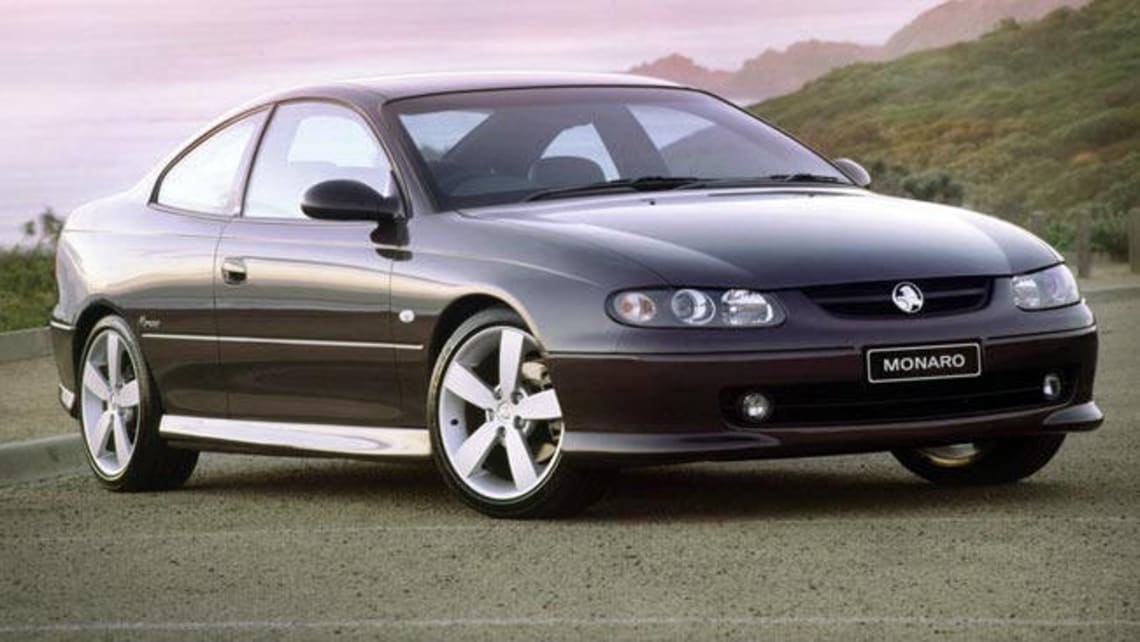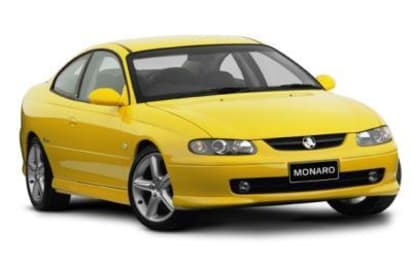
Used Holden Monaro review: 2001-2006
- Holden Monaro
- Holden Monaro 2004
- Holden Monaro 2006
- Holden Monaro 2001
- Holden Monaro 2002
- Holden Monaro 2005
- Holden Monaro 2003
- Holden Monaro Reviews
- Holden Reviews
- Holden Coupe Range
- Coupe
- Holden
- Used Car Reviews
- Buying tips

A two-door Commodore Coupe in concept was the runaway star of the 1998 Sydney Motor Show. Interestingly, Holden use the name Monaro for this stunning two-door, saying a fresh new model needed a new name, hence the tag of Commodore Coupe.
The public strongly disapproved, demanding that the car be called Monaro and, a long three years later the new Monaro finally hit the road in December 2001.
The new Monaro shared its wheelbase and much of its drive train with the Commodore sedan. But, obviously, many body panels were unique to the coupe.
The body is 100 mm shorter than the sedan’s but two passengers can sit in reasonable comfort in the back seat. Headroom is the governing factor, not legroom. So take a couple of tall passengers for your road test.
The interior is more distinctive in its finish than the sedan’s. Even the less expensive Monaro model has leather trim. The front seats have power operation and a smart release mechanism that makes them slide forward automatically to let people into the back.
The boot is surprisingly voluminous, even more so because it houses a space-saver spare wheel instead of a full-size unit. The rear seat backs don’t fold down, so you can’t increase boot space.
Styling changes with the introduction of the Monaro V2 Series II in December 2002; and in the V2 Series III from August 2003 were relatively minor.
The VZ Monaro of September 2004 had a much gutsier look thanks to the use of the bonnet scoops developed for the Pontiac versions of the coupe that were built in Australia and exported to the USA.
Only two engines were offered: a supercharged 3.6-litre V6 and a powerful 5.7-litre V8. Buyers overwhelmingly went for the bent eight and the V6 was quietly slipped from the scene midway through 2003.
The V8 came with a limited slip diff, 18-inch alloy wheels, premium stereo system, Variatronic steering, 12-function trip computer, automatic operation, road-speed dependent windscreen wipers, a three-position driver’s seat memory and climate-controlled air conditioning.
Compared with the Commodore, Monaro’s suspension is less compliant to suit its sporting nature. Some owners looking for a cruiser and not a bruiser may find the springing too stiff. Others will grumble about road shock coming up the steering column.
Both the V8 and V6 have great steering systems but the V8’s steering is sharper and more responsive than the six, again because it’s aimed at the sports buyer.
Holden Monaro is not as quiet as the sedan, though it's better in this regard on rough roads than many imported coupes.
There are front and side airbags for the front occupants, height-adjustable pyrotechnic front seat belts and ramps in the front seats to prevent someone slipping under the safety belt during a collision. ABS brakes try to prevent the need of the previously mentioned items.
Traction control complements the safety package, cutting back power if one rear wheel should rotate faster than the other. However, keen drivers will find it’s too intrusive and doesn’t back off again quickly enough.
Both Monaro models have an adjustable steering column, engine immobiliser, remote releases for the boot lid and fuel flap, power door mirrors, mobile phone point, a decent audio system with steering column controls, and driver's seat lumbar adjustment.
The Monaro V6 and V8 are both genuine performance cars, costing much less than imports with similar performance and handling.
Holden Special Vehicles (HSV) introduced its hotter variants of the new Monaro in December 2001. However, it didn’t call its car ‘Monaro’, simply tagging it ‘HSV Coupe’. The Melbourne based HSV operation said it wanted to differentiate its versions from the Holden original.
The HSV body revamping gives the HSV Coupe a lower, meaner look. Changes to the body hark back to the days of the old 1960s and ‘70s Monaros in the ‘gills’ behind the front wheels, as well as cues to the old wheel covers in the new alloy wheels. Clever stuff.
A fascinating version was the HSV Coupe 4, launched in December 2004 it uses a four-wheel-drive system to further aid traction. However, its added weight and the loss of most of the boot space meant it never really took off in buyers’ minds.
Spare parts are still available for these Monaro and are pretty reasonably priced. It goes without saying that there are Holden dealerships in just about every town of any significance in Australia.
Bits that are unique to the Monaro may not be stocked in more remote regions, but it seldom takes more than a couple of days for them to be transported from the spare parts facility.
Service and repairs are often within the ability of the good amateur mechanic and there's plenty of underbonnet space in a large car like this. As always, don’t touch any item that may be safety-related unless you know what you are doing. And it's wise to have a workshop manual at your elbow before commencing.
Insurance premiums are usually higher than for the equivalent Commodore, reflecting the sporting nature of the typical buyer. But the costs are certainly not prohibitive.
Despite doubters saying the new Monaro would be a flash in the pan and wouldn’t last it continued to sell strongly for several years, before finally being cancelled in July 2006.
Quite a few were exported to the USA and sold in solid numbers, though with their steering wheels on the wrong side for Australia. It will be interesting to see if any re-imports get back to this country.
What to look for
Monaros are generally bought by enthusiasts and get servicing strictly by the book. Ask to see the complete service record. Engines should start easily and idle smoothly virtually from the moment they light up.
Manual gearboxes should be quiet in operation and pick up lower gears during all changes with no graunching. The change action isn't the lightest around, after all these are large cars with big-torque engines, but if one feels too bad be very suspicious.
Make sure the automatic transmission changes smoothly and quietly, it should be virtually seamless except when accelerated hard.
Check that the correct oil pressure is reached pretty well straight away. This is best done with the engine stone cold, preferably after and overnight stop.
Look for signs of body damage and for crash repairs. If there's the slightest doubt as to the body’s condition have a professional give it a thorough inspection. We often see minor damage on the bumper corners as these are big cars and can be hard to squeeze into tight parking spots.
Check over the condition of the complete interior, particularly for signs of sun damage on the dash pad and rear shelf. Look for scuffing of the front seat backs where people have squeezed through to the rear area.
Car buying tip
A car that has been pampered bay loving owner is likely to be in excellent condition - if it hasn't been thrashed and/or taken to track days.
Pricing
| Year | Price From | Price To |
|---|---|---|
| 2006 | $28,160 | $33,880 |
| 2005 | $28,050 | $33,770 |
| 2004 | $27,390 | $33,550 |
| 2003 | $21,450 | $33,000 |
| 2002 | $21,230 | $32,340 |
| 2001 | $21,230 | $31,790 |
Pricing guides
Range and Specs
| Vehicle | Specs | Price* | |
|---|---|---|---|
| CV6 | 3.8L, PULP, 4 SP AUTO | $21,230 – 26,840 | 2001 Holden Monaro 2001 CV6 Pricing and Specs |
| CV8 | 5.7L, PULP, 4 SP AUTO | $25,740 – 31,790 | 2001 Holden Monaro 2001 CV8 Pricing and Specs |
$21,230
Lowest price, based on third party pricing data







